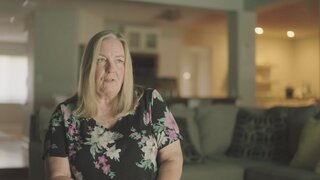Create a free profile to get unlimited access to exclusive videos, breaking news, sweepstakes, and more!
The First 'Dr. Death,' Jack Kevorkian, Helped 130 Patients Commit Suicide With Euthanasia
Before D Magazine dubbed Christopher Duntsch “Dr. Death” for his trail of botched operations and dead bodies, there was another surgeon that went by that moniker, but for very different reasons — Dr. Jack Kevorkian.
Murders A-Z is a collection of true crime stories that take an in-depth look at both little-known and infamous murders throughout history.
Before D Magazine dubbed Christopher Duntsch “Dr. Death” for his trail of botched operations and dead bodies, there was another surgeon that went by that moniker, but for very different reasons. Starting in the late 1980s, pathologist Dr. Jack Kevorkian became a leading advocate for euthanasia and a practitioner of physician-assisted suicide.
He claimed to have assisted in the suicides of more than 130 patients from 1990 to 1998, according to the Los Angeles Times. While Kevorkian was eventually convicted of second-degree murder and served eight years in prison, he is credited with igniting a national debate about euthanasia that would eventually lead to legislation like Oregon's Death with Dignity Act, which was enacted in 1997 and allows the terminally ill access to end of life drugs.
Murad “Jack” Kevorkian was born in 1928 and grew up in Pontiac, MI, the second of three children born to Armenian immigrants. His parents had come to America in the waning days of the Ottoman Empire, fleeing the Armenian Genocide of 1915, according to ABC News. After graduating high school with honors, he attended the University of Michigan, where he earned his medical degree.
Even as a resident pathologist, Kevorkian had a deep fascination with death. He would study dying patients, recording changes in their eyes to pinpoint the exact time of death, according to the Los Angeles Times. Years before his later infamy, nurses nicknamed him, “Dr. Death.” He would later propose conducting experiments on death row inmates, and successfully performed blood transfusions from the recently deceased to the living.
After practicing pathology in California for a number of years, Kevorkian moved back to Michigan in the early 1980s. Toward the end of the decade, he began placing ads in local papers, reading, "Doctor Consultant for the terminally ill who wish to die with dignity," according to a 1992 Los Angeles Times profile. He created two devices, one he called a “Thanatron,” which delivered a fatal combination of drugs through an IV, the other known as the “Mercitron,” which administered deadly carbon monoxide through a gas mask. Kevorkian later embarked on a PR campaign to spread his message. Appearing on the daytime talk show “Donahue,” Kevorkian described the Thanatron as “dignified, humane and painless, and the patient can do it in the comfort of their own home at any time they want,” according to an episode of PBS’ “Frontline.”
Following his press appearances, Kevorkian was contacted in 1989 by Janet Adkins of Portland, Oregon. The 54-year-old was suffering from Alzheimer's disease. After talking with Adkins and her husband, Kevorkian agreed to help her take her own life. On June 4, 1990, Adkins traveled to Michigan and was hooked up to one of Kevorkian's death machines in the back of his van. Adkins pressed a button, letting the poisons enter her bloodstream, and died within a few minutes. She penned a suicide note, which said, ''This is a decision taken in a normal state of mind and is fully considered. I have Alzheimer's disease and I do not want to let it progress any further. I do not want to put my family or myself through the agony of this terrible disease,” according to The New York Times.
In December 1990, prosecutors in Oakland County, Michigan, decided not to pursue murder charges against Kevorkian, following a ruling at a preliminary hearing, at which a judge said there was no proof he had planned and carried out the death of Janet Adkins, according to The New York Times. The following fall, Kevorkian was at a rented cabin in Michigan, where two women suffering long-term pain and illness used his devices to commit suicide, according to “Frontline.” The next month, members of Michigan’s State Board of Medicine unanimously voted to suspend Kevorkian’s medical license, and eventually revoked it. Michigan Governor John Engler signed legislation that December making assisted suicide a felony.
Over the following years Kevorkian assisted in myriad suicides, often using carbon monoxide, since he no longer had access to pharmaceuticals, due to his lack of a medical license. In 1994, Kevorkian went on trial for assisting in the suicide of Thomas Hyde, a 30-year-old man with Lou Gehrig's disease. He was the 17th person Kevorkian had helped commit suicide. After deliberating for nine hours, jurors acquitted him on all charges. Kevorkian was resolute in his mission following the first of his three acquittals: “Obviously, what are needed are guidelines on (assisted suicide), and that is the first priority to me,” he said, according to The New York Times.
Kevorkian was tried and acquitted twice in 1996. He had come to treat his arrests and trials as a way to plead his case for a national medical policy for euthanasia, and drummed up press coverage by appearing wearing a ball and chain or dressed in Colonial garb, symbolic of what he considered antiquated laws and attitudes about suicide, according to “Frontline.” In November 1996, he was arrested again on 19 counts of assisted suicide. That case ended in a mistrial after Kevorkian's lawyer, Geoffrey Fieger, accused the state of "vindictive and malicious prosecution," according to The Washington Post.
Kevorkian’s death count reached 100 in March 1998, according to “Frontline.” In November of that year, he was arrested on charges of first-degree murder after CBS's “60 Minutes” aired a segment that showed him personally administering a lethal injection to Thomas Youk, a 52-year-old man with Lou Gehrig's disease. A defiant Kevorkian had given the footage to the show, daring authorities to arrest him and saying, “This could never be a crime in any society which deems itself enlightened," according to CNN. Oakland County prosecutors took him up on his challenge, despite the Youk family professing their gratitude to Kevorkian for ending their loved one’s suffering.
The fifth trial of Jack Kevorkian began in March 1999 and, for the first time, he decided to represent himself. It was not a good idea. He stumbled often, “asking witnesses legally inappropriate questions and raising impermissible legal arguments,” according to The New York Times. After deliberating for 13 hours, a jury found him guilty on the lesser count of murder in the second-degree, according to The Daily News, who quoted him saying, “That proves how corrupt the society is, and how malevolent are those who run it."
The 70-year-old Kevorkian was sentenced to 10 to 25 years in prison. “When you purposely inject another human being with what you know is a lethal dose, that, sir, is murder,” the judge told him, according to The New York Times.
Kevorkian’s conviction and sentence was upheld through numerous appeals despite health problems and his advanced age. After serving eight years, he was released in 2007 with time off for good behavior and a promise not to aid in any more suicides, according to NBC News. The following year he unsuccessfully ran for congress. The 2010 HBO film “You Don’t Know Jack” starred Al Pacino as Kevorkian and was directed by Academy Award winner Barry Levinson.
In the remaining years of his life Kevorkian continued to advocate for the rights of terminally ill people to choose and control the circumstances of their death. His own end came on June 4, 2011, when Kevorkian died at the age of 83 in a Michigan hospital from a pulmonary thrombosis. Euthanasia and assisted suicide remains illegal in most of the United States.
This summer, tune in as Oxygen investigates the jaw-dropping cases of murderous doctors, nurses and medical professionals in “License to Kill,” streaming now on Oxygen.com. Hosted by renowned plastic surgeon Dr. Terry Dubrow (“Botched”), the series chronicles the harrowing accounts of patients put into jeopardy by medical professionals’ insidious use of their expertise.





















